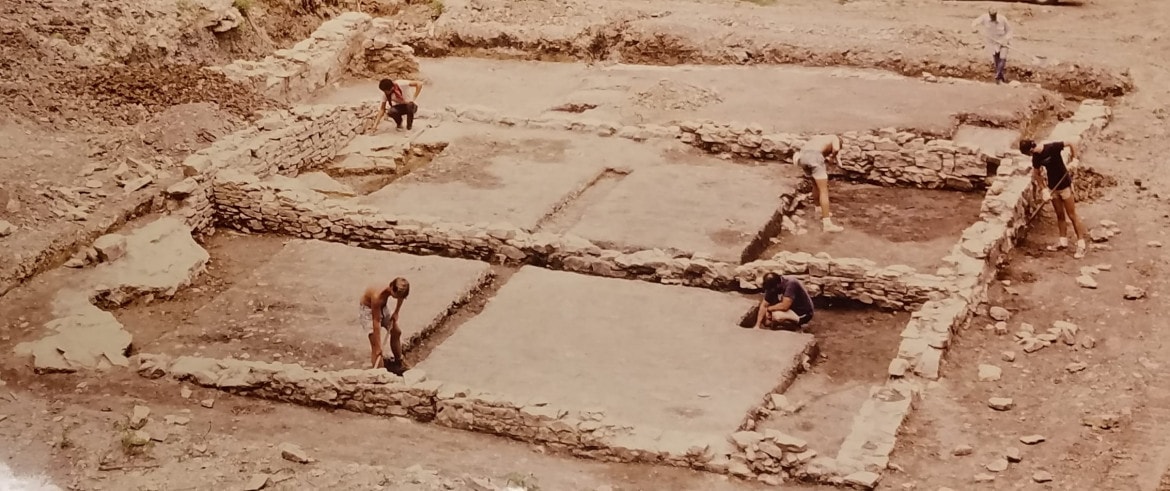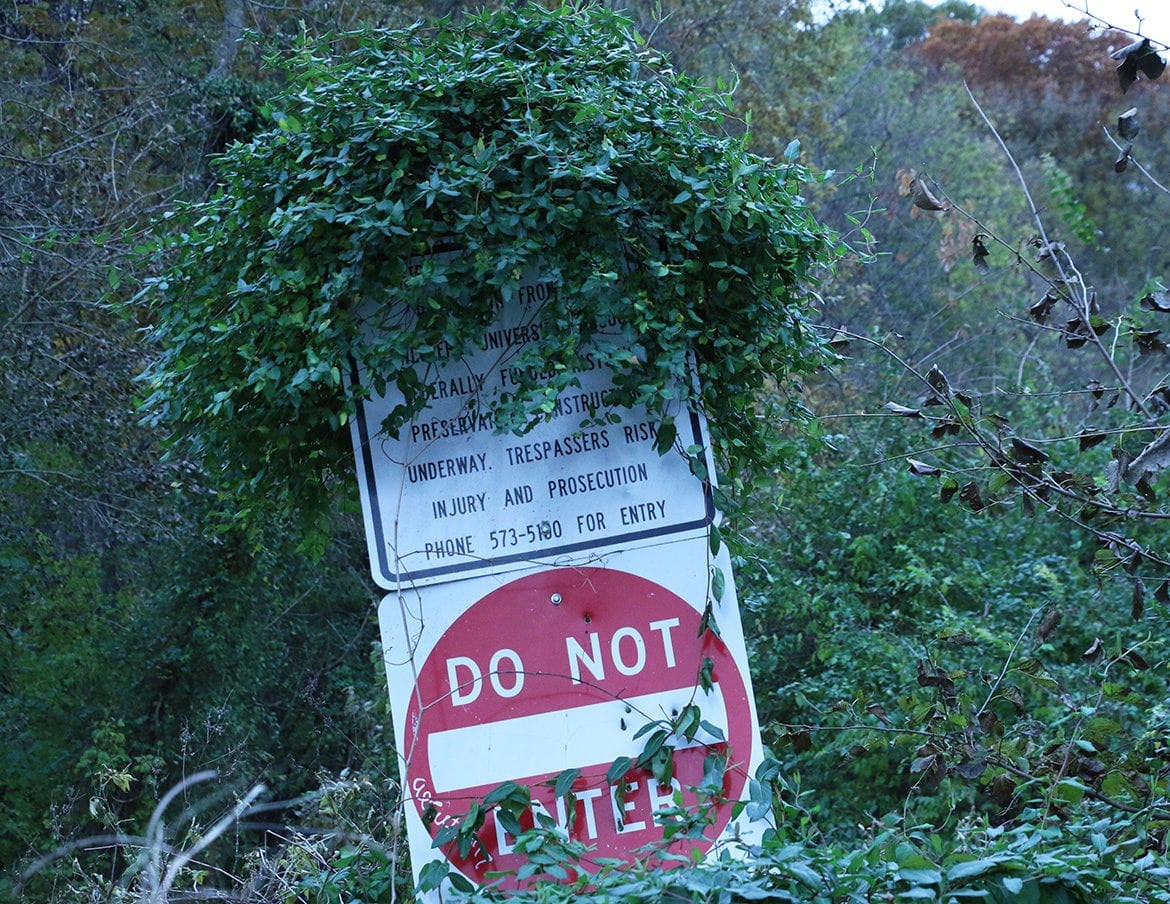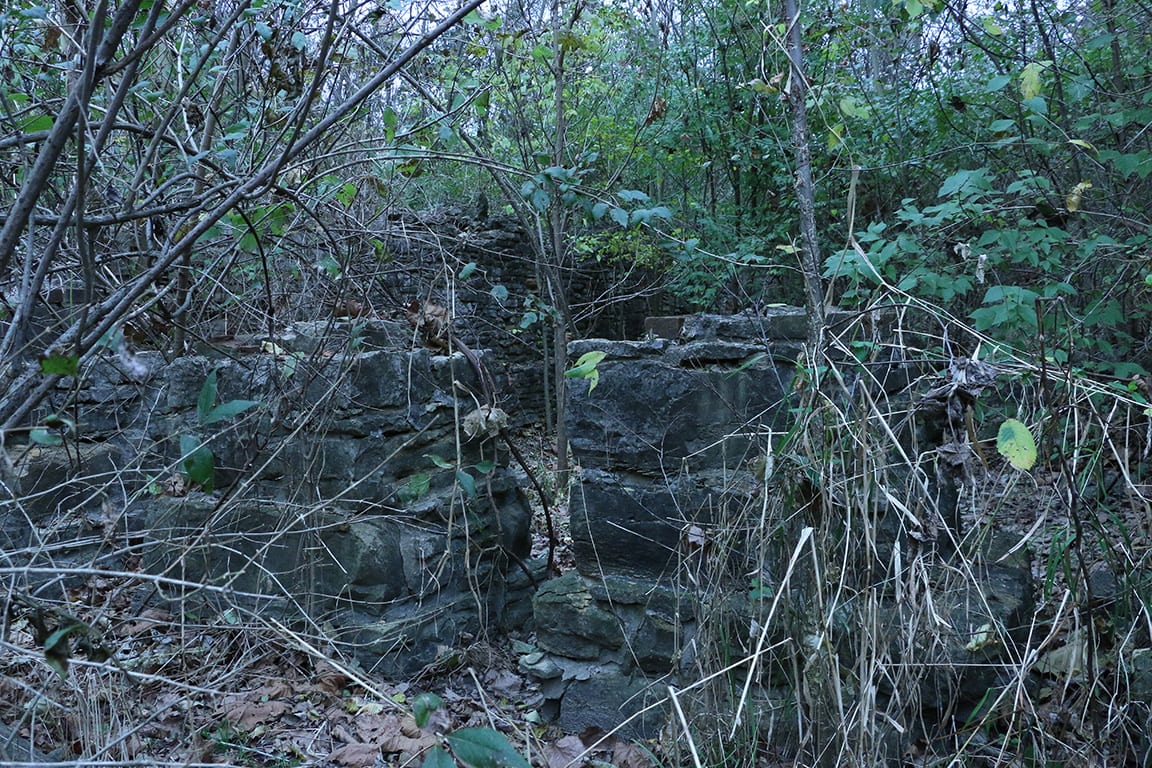Remembering Quindaro: ACLU of Kansas Shines New Light Inspired by The 1619 Project
 Workers handle preservation duties duringa 1980s excavation of the Quindaro site. They are working on the old J.B. Upson Building, which housed a clothing store and served as offices for the Chindowan newspaper. ( Larry Schmits)
Workers handle preservation duties duringa 1980s excavation of the Quindaro site. They are working on the old J.B. Upson Building, which housed a clothing store and served as offices for the Chindowan newspaper. ( Larry Schmits)
Published August 10th, 2023 at 6:00 AM
The ACLU of Kansas is asking people to study the history of Quindaro to envision a more just and equitable Kansas.
Quindaro, the organization argues, is more than a site of historic significance, known mostly as a stop along the Underground Railroad on the Kansas bank of the Missouri River in what is now Wyandotte County.
Quindaro was an idea.
The organization is releasing “Quindaro Report: Same Water Coming ‘Round,” a carefully curated, more than 40-page analysis of the former township. Quindaro was once a thriving, multiracial community, inextricably linked to the region’s history before, during and after the Civil War.
“An unlikely though distinctly American group of multiracial people founded the settlement – white, Massachusetts abolitionists, Black freedmen and freedwomen, and Indigenous people established this town, named literally, ‘a bundle of sticks,’ but figuratively, ‘strength in unity.'”
ACLU of Kansas Report
“The fact is that they were able to come together to share this common vision of a truly democratic place that tells us that it can be done, and it gives us a model to look to,” said Micah Kubic, executive director of the ACLU of Kansas.
Every city in the nation likely has such a marker, a moment in time when more equitable thinking and action prevailed, offering a chance for a fairer, more just society to evolve.
For this region, Quindaro was determined to be that place.
“Quindaro was really that metaphor for a way of thinking about how the state started, how it’s gone and where we should go,” Kubic said.
“Quindaro represents our greatest aspirations as a state but also the fragility of our democracy. Democracy must work for everyone, or it is not a democracy and Quindaro began as what the nation hoped it could – as a multi-racial democracy.”
ACLU of Kansas Report
The report was authored by Mark McCormick, deputy director of strategic initiatives for the ACLU of Kansas.
Quindaro’s struggles are documented, offering insight into the many factors that undermined and fractured the township. Key factors include the highway that divided it, legal segregation and economic isolation.

Many of the impacts fall under what’s often noted as engrained systemic racism.
The project’s genesis came while Kubic was reading The 1619 Project and began thinking about what a similar framework for this region would be.
The 1619 Project is a Pulitzer Prize-winning body of work produced by The New York Times magazine. The date 1619 denotes when the first ship carrying enslaved Africans arrived in Virginia and when the people were later sold to colonists.
“Despite the gauzy rhetoric about equality and freedom here in Kansas, inequality and anti-Blackness predates the state’s formation. Inequality and anti-Blackness predate the formation of America on this continent, too. But the nation has fought these propensities across the centuries, never quite succumbing to these darker forces, but never fully exorcizing them either. “
ACLU of Kansas Report
At its core, it’s a framework for seeing the nation through the consequences of slavery, for documenting the importance of the contributions of enslaved people in creating this country’s wealth and all that followed for their descendants.
“We’re putting it out there as a way of hoping to sort of shape the debate and the conversation and to get people thinking about what Kansas can be,” Kubic said of the report.
Eventually, a symposium might be organized around the history of Quindaro, Kubic said.
But at this point, the ACLU will ensure that Quindaro, its original goals, are infused with the organization’s work.
Included in the report are descriptions of previous efforts, and many of its recent legal filings seeking to ensure voting rights are upheld in Kansas.
“Voting remains one of the few things we do together where our social status or economic station may determine the convenience of casting a ballot but has no bearing on the power of the vote itself. One person, one vote. A wealthy white man’s vote counts the same as a working-class Black woman’s vote. We live together, we vote together, we govern together.”
ACLU of Kansas Report
The establishment of Quindaro predated the state’s founding by five years.
Initially, Quindaro flourished, growing to more than 1,000 residents with thriving businesses to serve their needs.
Today, it is an archaeological site, often referred to as “ruins.”
But the site’s history is a way to also study the importance of the Fugitive Slave Act, the Missouri Compromise and the Kansas-Nebraska Act. Each had a role in the Civil War.
Also discussed are the accomplishments of people who were instrumental to Quindaro’s story.
There was Abelard Guthrie and his wife, Nancy Quindaro Guthrie, the town’s namesake.
More recent history is also covered, such as the building of Interstate 635, which came about in the 1960s, cutting through the area.
Kubic spoke to the bravery of Quindaro’s original inhabitants and their vision of their community and this country as a “free and equal multiracial democracy.”
“If we’re talking about the future, we’ve got to think about the past,” Kubic said.
In many ways, it’s a conversation that has already begun.
Across the state line, the city of Kansas City has embarked on a study to decide what it could hold itself responsible for in terms of reparations. A mayor’s commission has been appointed to study the issue and make recommendations.
The city’s work began after years of similar study led by the local chapter of the National Black United Front in Kansas City.
“That slavery should be presented not as a blemish the founders grudgingly tolerated, not as a regrettable chapter of the distant past, but as a living, breathing pattern upon which all American social life is based.”
The 1619 Project, by Nikole Hannah-Jones
The ACLU is not shying away from the fact that the 1619 Project – indeed any aspect of studying U.S. history – has become controversial. One common argument is that studying slavery and racism, in general, makes white people feel bad or places blame.
Making people think deeply often does come with some resistance, Kubic noted.
“I think the challenge for white people is to understand this history, to know the history, to know the way that privilege and systemic racism and structures have created the outcomes that we have today.”
Mary Sanchez is senior reporter for Kansas City PBS/Flatland.




